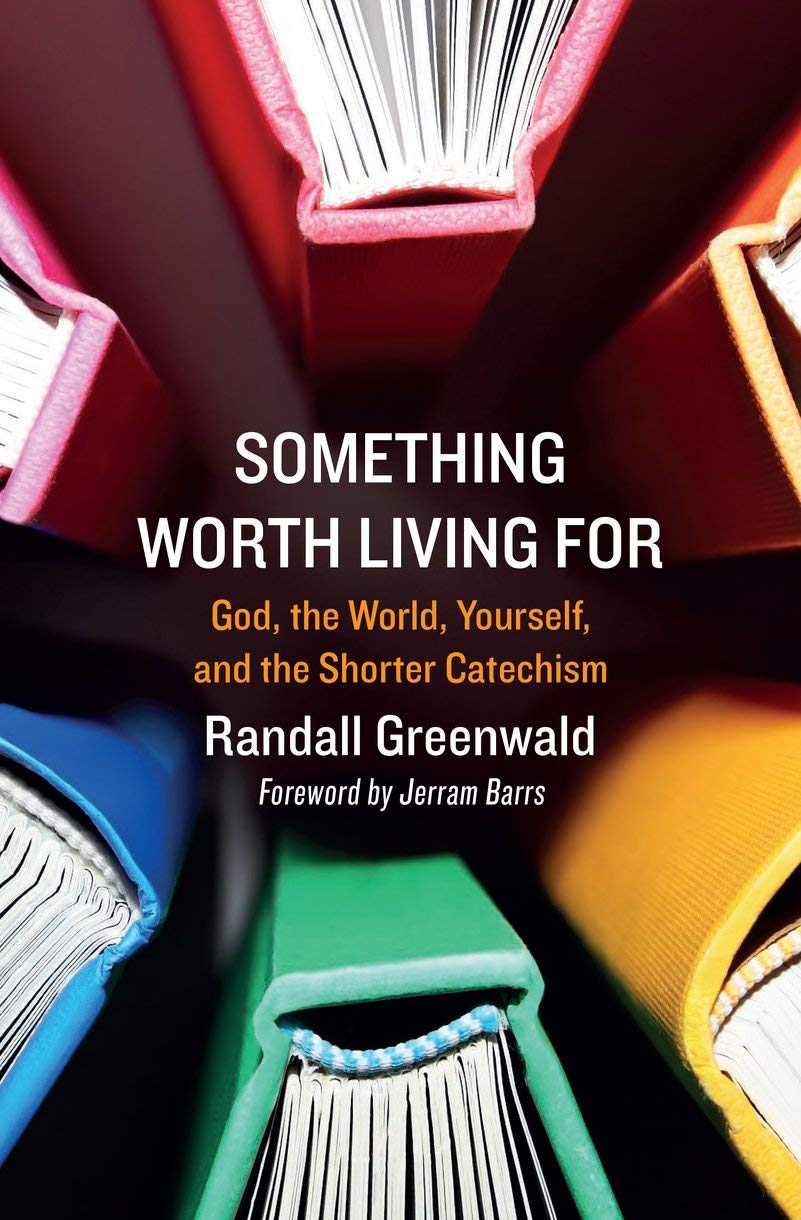
Randall Greenwald
Reviewed by: J. V. Fesko
Something Worth Living For: God, the World, Yourself, and the Shorter Catechism, by Randall Greenwald. Christian Focus, 2020. Paperback, 256 pages, $12.99 (Amazon). Reviewed by OP professor J. V. Fesko.
Ever since the Westminster divines penned the Shorter Catechism, theologians have written books to explain the document to would-be catechumens, ranging from Thomas Watson’s (ca. 1620–86) A Body of Practical Divinity, which was a series of 176 sermons on the catechism, to the second edition of G. I. Williamson’s The Westminster Shorter Catechism: For Study Classes (2003). While the Shorter Catechism was originally written for the instruction of children, theologians have found the catechism a useful tool for instructing adult believers. This is the nature of Randall Greenwald’s Something Worth Living For. Greenwald was discipling a young college graduate but was dissatisfied with the book they initially selected, so he wrote this book (251). Unlike Watson’s or Williamson’s works, Greenwald’s book is devotional in nature. Greenwald reflects upon one to three questions at a time and then offers a one- to three-page reflection upon the doctrines discussed.
There are two noteworthy observations about the book. First, Greenwald’s treatment of the second commandment leans away from the teaching of the Westminster Standards. He claims, “the second commandment directs the character of our Sunday morning worship” (146). In a footnote, he then argues that the “second commandment has public worship, not public art, in view” (146 n.1). An isolated examination of the Shorter Catechism might allow for such a view (Q. 51). But read within the context of the standards, the divines were explicit in rejecting images of any type, regardless of whether they were for public worship or beyond. The Larger Catechism rightly argues that the second commandment prohibits “the making any representation of God, of all or of any of the three persons, either inwardly in our mind, or outwardly in any kind of image or likeness . . . under the title of antiquity, custom, devotion, good intent, or any other pretense whatsoever” (Q. 109). Greenwald does not claim his view is aligned with the Shorter Catechism’s but in his rejection, he misses an important opportunity to press the truth of Christ’s unique place as the uncreated image of God and believers as God’s redeemed image bearers, indeed bearers of Christ’s image (Eph. 4:20–24).
Second, readers should note that Greenwald’s book is aimed primarily at adults, not children, as the Shorter Catechism was originally intended. A number of illustrations from R and PG-13 rated movies (86, 167, 185, 229), a 13+ TV show (123), and a contemporary philosopher (135) might either prove ill-suited or beyond the grasp of a child’s mind.
Among the book’s positive features are the way that Greenwald engages doctrine in a practical and accessible manner. Greenwald plies his years of pastoral and parenting experience as he explains the Bible’s teaching. There are anecdotes and stories that amply connect doctrine and life. The brevity of each chapter also commends the book. I envision the book being valuably used in a discipleship context or for Lord’s Day reading.
August 17, 2025
Reformed Covenant Theology: A Systematic Introduction
August 10, 2025
August 03, 2025
July 27, 2025
July 20, 2025
July 13, 2025
Proclaiming Christ in a Pluralistic Age
July 06, 2025
© 2025 The Orthodox Presbyterian Church